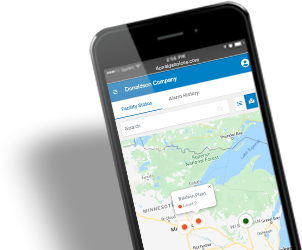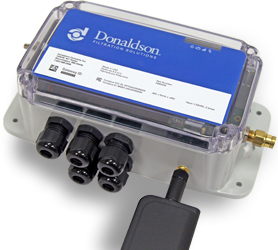Dust Collection for Abrasive Blasting Applications
Filtration Solutions for Various Abrasive Blasting Applications
Reliable Dust Collection & Explosion Mitigation for Abrasive Blasting Applications
AST Canada supplies reliable dust collection, fume extraction and combustible dust mitigation solutions to fit a variety of abrasive blasting applications in the metalworking industry.
With several decades of experience engineering dust collection systems, AST Canada is the name you can trust above all others for solutions to dust, mist & fume collection plus fire & explosion mitigation in industrial settings.
Abrasive Blasting Processes
Abrasive blasting or blast finishing, with all its variations, can provide enough power to remove heavy surface materials, or can be gentle enough to take print off paper without penetration. Typically, blasting provides one of three general processes, these being:
- surface finishing
- surface preparation
- surface modification
Surface Finishing Process
In surface finishing, abrasive blasting is used to:
- Remove surface contamination
- Create a specific finish on the desired surface
Surface Preparation Process
In surface preparation, abrasive blasting is used to:
- Roughen surfaces for the application of paint
- Remove surface irregularities
Surface Modification Process
In surface modification, abrasive blasting increases compressive stresses on the surface which in turn:
- Provides increased fatigue life
- Decreases susceptibility to stress corrosion
- Corrects distortion
- Forms structural steel and plate
Applications
Abrasive Blasting or Blast Finishing
Wet Blasting
Wet blasting is a precision finishing operation normally consisting of air-blasted slurries of fine abrasive suspended in chemically treated water. Controlled wet blasting can avoid metal removal and can hold dimensional tolerance to within 0.0001-inch. It can also hone multi-tooth hobs, and finish fragile items such as hypodermic needles. Wet blasting equipment is usually cabinet style, and reserved for small, delicate workpieces.
Dry Blasting - Considerations for Dust Collection
Common Applications & Equipment, in Dry Blasting & Shot Blast
Common Applications and Equipment in Dry Blasting and Shot Blast Include:
- Manual Cabinet
- Rotary Basket
- Rotary Table
- Automated Feed Booths
- Tumblers, Barrels
- Oscillation Units
- Blast Rooms
Feed Material Considerations
- Media used in dry blasting processes varies from facility to facility and from day to day within a facility, depending on the specific needs of the customer. The media used ranges in size from 20 to 6000 mesh and the style of blasting will determine the size of particulate collected.
- Dust collection equipment selection must consider particulate from both the blasted material and the blasting media used. The blasted materials can make up as much as 95% of the collected contaminate in the dust collector so fire, explosion, corrosive, or toxic considerations for the blasted material may define requirements for the specific application.
Blasting Style Considerations
Styles of dry blasting, will determine the loading conditions of the dust collector. Blasting styles include:
- Direct pressure provides a uniform finish in a short time, and offers more precise system controls, making this style appropriate for heavy finishing jobs like removing heavy mill scale or paint. This style is also good for reaching hard-to-reach recessed areas, odd shapes, large workpieces, and high-speed production. Consequently, this style produces heavy grain loading conditions.
- Induction (suction) is used for light to medium production, limited space, or where moderate budget requirements exist. Some pressure is lost to the media suction requirement, therefore it is less efficient than the direct pressure style. it is usually reserved for cabinet-type blasting units. This style does not generate high grain loading, however, if multiple cabinets are being exhausted simultaneously, grain loading can increase significantly.
- The Airless or Blast Wheel style is used in heavy production environments where there is a need for automated systems and minimal human interaction. Parts come to the blast machine either by a mechanical conveyor or are loaded manually into the blast machine. Due to the amount of blast media used, these machines can produce heavy grain loading conditions.
Collection Strategies for Dry Blasting
Distancing Hoods
Keep hoods as far from the actual blasting process as possible but maintain proper removal of the contaminant from the blasting area. There are two advantages to keeping the collection hood at a distance:
- reduce the possibility of clean or good blast media entering the dust collector
- reduce the effects of abrasion in the collector, as only dust is collected
Dust Collector Air Inlet
Have air enter the dust collector through one of the following inlet types. (Remember blast media removes material or alters a surface, and it will do the same thing to the dust collector and filter elements.)
- Abrasion Resistant (A/R) Inlet,
- Drop-out box,
- Duct tapered to full inlet dimensions
- Consider options to reduce collector media abrasion,
- Abrasion Resistant Liner, or
- Cyclone Prefilter
Dust Loading
Dust loading to the collector plays a large part in how the collector performs. Even when blast media is not the most abrasive, a large volume can prove fatal to filter elements. Again, consider inlet conditions to reduce dust loadings to the collector.
Volumetric Flow Rate
Determining a volumetric flow rate for a blasting process involves review of the blasting equipment used, the blasted material, the blast media, and any specific customer requirements. Typical objectives are visible clarity, dust containment, and/or cross draft velocities.
- Visible clarity requests often define the frequency of system air exchanges in a given volume. These requests are usually associated with the time it takes the blasting environment to become visually impaired. Recommendations of 60-100 cfm/ft2 of floor or ceiling, and 100 cfm/ft2 of wall space are common. Typical cabinet blasting recommendations are 20 air changes per minute.
- Dust containment requests are associated with cabinet or automated blasting processes. Air volumes are determined based on the velocities necessary through open areas to prevent dust from escaping the enclosure. Dust containment requests are associated with cabinet or automated blasting processes. Air volumes are determined based on the velocities necessary through open areas to prevent dust from escaping the enclosure. Cabinet recommendations of 500 fpm through the open areas are common. For rotary tables, use 200 cfm/ft2 of opening.
- Cross Draft velocity requirements are associated with blast rooms, and collector size is based on a given velocity across a given cross sectional area. Common recommendations are 100 cfm/ft2 of wall for crossdraft through the room, across the work piece, away from the worker(s). Lower control velocities may be used depending on toxicity of the contaminant, object and blasting media and the size of the blasting room.
Notes to Collection Strategies
- Special considerations for the material blasted are important. Blasting materials that are explosive, flammable, corrosive, or toxic means precautions are necessary for the dust collector.
- Most blast media is used several times with only 5% – 8% of the media “spent” during a single blast sequence. Consider the material blasted with every application being careful not to mix incompatible materials in the same collector.
- Blast media is abrasive, so apply abrasion-reducing features with each collector.
- Due to the extremely wide variety of materials blasted, the various blast media available, and the differences in styles of blasting, not all applications are addressed in this report.
Definitions:
- Media – Substance used in an abrasive blasting operation. Media may be in granular, powder, pellet, or shard form depending upon specific customer requirements.
- Abrasive Blasting – The forcible application of an abrasive media to a surface by pneumatic pressure, hydraulic pressure, or centrifugal force.
- Blast cleaning barrel – A complete enclosure which rotates on an axis, or which has an internal moving tread to rumble the parts, in order to expose various surfaces of the part to the action of the blast spray.
- Blast cleaning room – A complete enclosure in which blasting operations are performed and where the operator works inside of the room to operate the blasting nozzle and direct the flow of the abrasive material.
- Blasting cabinet – An enclosure where the operator stands outside and operates the blasting nozzle through an opening or openings in the enclosure.
- Rotary blast cleaning table – An enclosure where the pieces to be cleaned are positioned on a rotating table and are passed automatically through a series of blast sprays.
Related Products
Cartridge
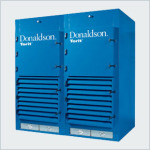
Downflo® WorkStation
Specifically designed for areas of dirty and/or noisy operations, the Donaldson Torit® Downflo® Workstation (DWST) applies no restrictions to worker movements or visibility.
PowerCore®
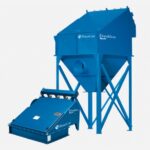
CP Series
Donaldson Torit® PowerCore® CP Series cartridge dust collectors use smaller, more efficient filters compared to baghouse models with a footprint up to 50% smaller.
Baghouse
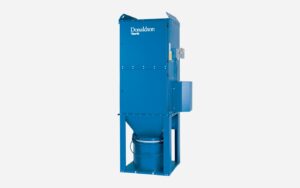
Unimaster®
The Unimaster® baghouse dust collector does not use compressed air, and comes with a fan, automatic shaker and controller to simplify installation.
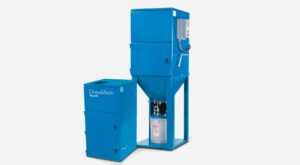
Cabinet Series
Cabinet Series dust collectors provide reliable and economical solutions to in-plant dust and smoke control problems – in an efficient, compact design.
IoT Enabled with iCue™ Connected Filtration Service
* may not be available on all models
Resources
Related Articles

AST Canada has been helping clients find solutions for their unique Dust, Mist & Fume Collection needs for more than 40 years.
We can help you too.

